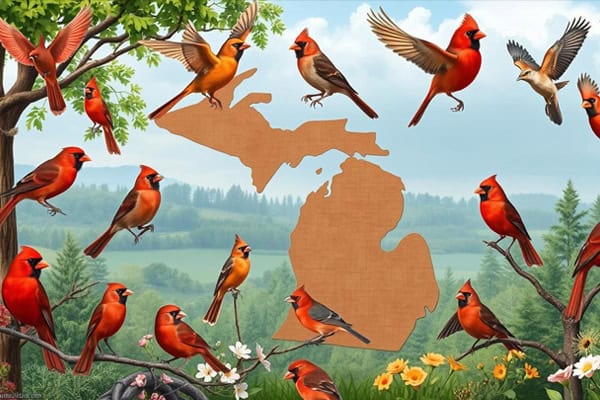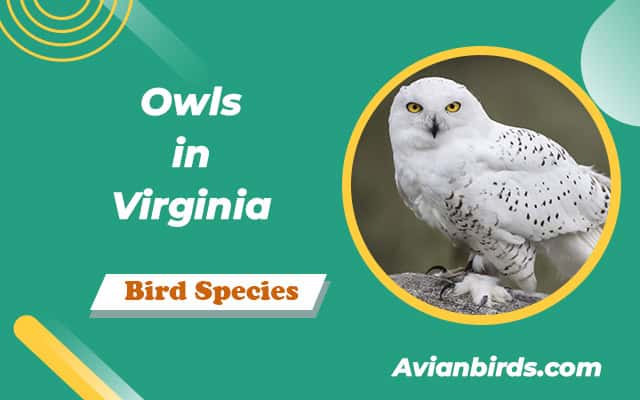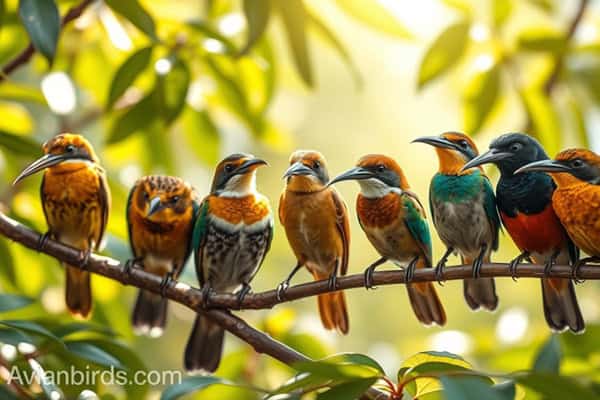Top 10 Types Of Hawks In Iowa (With Pictures)
Are you ready to explore the amazing world of Hawks In Iowa? Hawks, part of the Accipitridae family, are known for their sharp vision and hunting skills. But how many types of hawks live in Iowa? Let’s look at the top 10 hawk species found in the state.
Hawks in Iowa
Iowa is known for its vast farmlands, but it also has diverse natural habitats. These support a wide variety of bird life. Hawks are among the many species found here, thanks to the forests, lakes, prairies, and wetlands.
Our state is home to over 430 bird species. Hawks are a key part of this rich bird life.
1. Sharp-shinned Hawk
The sharp-shinned hawk is a small but powerful bird found in Iowa. It stands out with its blue-grey upperparts and orange breast. Its short wings and long tail help it move through dense woods to catch small songbirds.

Physical Characteristics and Identification
This bird of prey is tiny, measuring 9.4 to 13.4 inches long and weighing 3.1 to 7.7 ounces. Its wingspan is 16.9 to 22.1 inches, perfect for quick movements. Females are bigger than males, almost as large as a male Cooper’s hawk. Young sharp-shinned hawks have brown feathers and vertical streaks on their bellies.
Nesting and Breeding Habits
Sharp-shinned hawks make their nests high in tall trees. They use sticks to build a wide platform and line it with bark. The female lays 3 to 8 eggs, which she incubates for 30 to 35 days. After 21 to 28 days, the hatchlings can fly.
These hawks usually live about 5 years, but some have reached 12 years old.
Diet and Hunting Behaviors
Small songbirds like robins and sparrows are the main food for sharp-shinned hawks. They also eat larger birds and mammals, like doves and mice. These hawks are very agile, moving quickly through the woods to catch their prey.
2. Cooper’s Hawk
The Cooper’s hawk and Sharp-shinned hawk may seem similar at first. But, they have clear differences. The Cooper’s hawk is bigger, with a blue-grey back and a black cap. It also has a red eye, an orange-red breast, and dark tail bands.
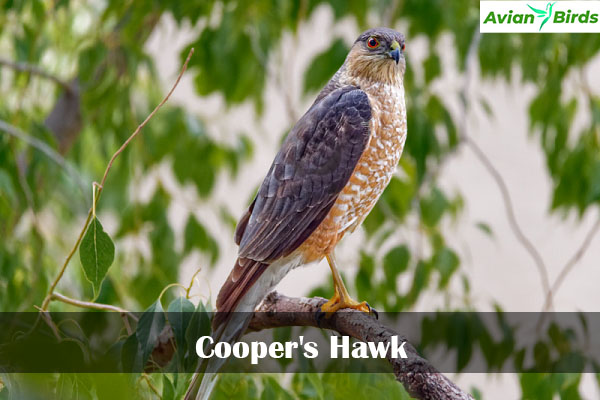
Its head sticks out more beyond its wings. Its wings and tail are rounded, with a white band at the tail tip.
Nesting and Reproduction
Cooper’s Hawks In Iowa make their nests high up in tall trees. They often use old nests or mistletoe, about two-thirds up the tree. Their nests are made of sticks and lined with bark or green twigs.
The female lays 2 to 6 blue eggs, which she incubates for 30 to 36 days. After 27 to 34 days, the young birds leave the nest.
In Iowa, the Cooper’s hawk is one of three accipiter species. They live from Panama to the southern Canadian provinces. A study found that 23 percent of hawk skeletons had healed chest fractures from hitting trees.
These hawks eat about 12 percent of their body weight each day. This helps them meet their high-energy needs.
Many young Cooper’s hawks don’t make it to adulthood, with 70 to 80 percent dying before reaching maturity. Males are smaller than females. In the 1900s, DDT caused their numbers to drop due to thin eggshells.
3. Northern Goshawk
The Northern Goshawk is a large and impressive bird that flies over Iowa. It has slate-grey feathers, a finely barred grey belly, and bright red eyes with a white eyebrow. This makes it a beautiful sight. Its broad wings and long tail help it be agile and strong in the hunt.

Appearance and Call
This large raptor can grow up to 24 inches long and has a wingspan of 46 inches. Its slate-grey back and head, along with its finely barred grey belly, look sleek. The red eye and white eyebrow are easy to spot. Its ki-ki-ki call is a unique sound in Iowa’s wild areas.
Habitat and Nesting
These birds live in mature forests with clearings. They often nest in large trees. Their nests are big, made of sticks, and lined with fresh green material and bark. They might use the same nest for many years or take over nests from other birds.
Prey and Hunting Techniques
The Northern Goshawk is a top predator, eating birds, reptiles, mammals, insects, and carrion. It eats hares, ground squirrels, jackrabbits, cottontails, grouse, woodpeckers, and corvids. It is fast and agile, chasing its prey in forests and clearings.
4. Red-shouldered Hawk
Hawks In Iowa the red-shouldered hawk is a medium-sized raptor that can be seen in Iowa’s skies. It has broad wings, a long tail, and reddish-brown underparts. Its tail and flight feathers show white and black bands. It also makes a unique kee-aah call.
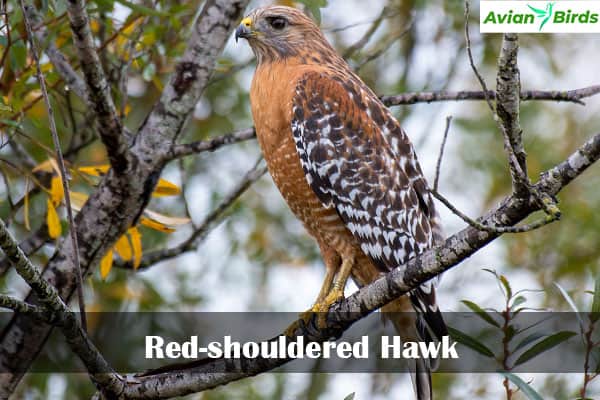
This hawk is one of five daytime raptors that nest in Iowa regularly. They live in bottomland forests and hunt small mammals, reptiles, and amphibians. Sadly, they are considered threatened in Iowa, making them very special.
Despite the challenges, red-shouldered hawks are resilient. Thanks to conservation efforts and habitat preservation, their numbers in Iowa have stayed stable. This shows how important it is to protect these amazing birds for Iowa’s ecosystem.
5. Red-tailed Hawk
The Red-tailed Hawk is a common sight in Iowa. It’s the hawk most people know. These large raptors are known for their impressive soaring skills. They glide through the sky or sit on fence posts or tall trees.

They have varied plumage of browns, whites, and reds. This makes them adaptable and they live in many places, from deep forests to cities. Red-tailed Hawks are the top predators in Iowa. They eat small to medium-sized mammals, snakes, and carrion.
They are skilled hunters, using their keen eyesight to spot prey from afar. Then, they swoop down with their powerful talons.
Red-tailed Hawks often nest in tall trees but can also nest in cities. They use window ledges or high spots on buildings. This adaptability lets them live in many landscapes, making them a common and loved sight in Iowa.
6. Sharp-shinned Hawk
The Sharp-shinned Hawk is smaller than the Red-tailed Hawk. It’s the smallest hawk in Iowa. These hawks are known for their agility and hunting skills. They zip through the woods or dart around backyard feeders after songbirds.

They have blue-grey backs, orange-barred chests, short rounded wings, and long tails. Females are bigger than males, making them stand out. Their size and agility make them great at hunting small birds in Iowa’s backyards and forests.
7. Rough-legged Hawk
The Rough-legged Hawks come to Iowa as winter visitors from their Arctic tundra homes. They travel to our open grasslands, wetlands, and farmlands. These large hawks are a delight for birdwatchers and nature lovers in the cold months.

These hawks are known for their unique hunting way. They don’t soar or perch to find food. Instead, they hover in place, facing the wind. This lets them spot small mammals, reptiles, and birds below for their meals.
| Habitat | Breeding Grounds | Prey | Hunting Style |
|---|---|---|---|
| Open areas, grasslands, wetlands, agricultural landscapes | Arctic tundra | Small mammals, reptiles, birds | Hovering while facing the wind |
Rough-legged Hawks stand out with their dark wrist patches and varied feathers. They have broad, rounded wings too. Their visit in winter shows their amazing migration skills. They travel far to hunt in Iowa’s open areas.
8. Broad-winged Hawk
The Broad-winged Hawk is a bird that moves with the seasons in Iowa. It travels long distances each year. These birds go from the northern forests to their winter home in South America.
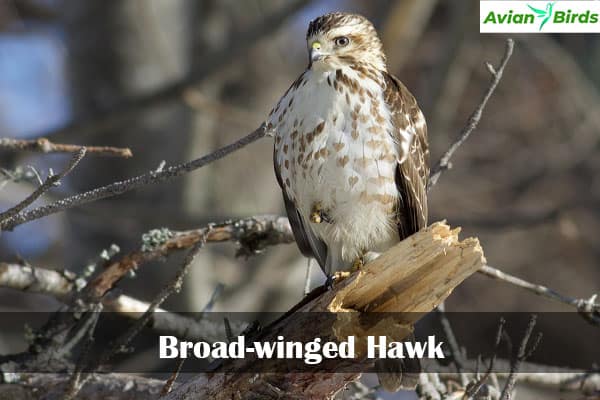
Migratory Patterns
Every fall, Broad-winged Hawks start a big migration. They fly about 4,350 miles to reach northern South America. They travel up to 69 miles a day, stopping often along the way.
These hawks have been making this trip for thousands of years. Fossils from over 400,000 years ago show they were in Iowa long ago. They were once common in Iowa but now are less seen.
Since the 1970s, they are rare breeders but common migrants. Their numbers have dropped due to hunting and habitat loss. This has made conservation efforts important.
To protect the Broad-winged Hawk, we need to keep large forests intact. These birds like big trees for their nests and large areas for breeding. More research is needed to understand their habits better.
9. Swainson’s Hawk
The Swainson’s Hawk is a fascinating bird of prey found in Iowa’s skies. It’s known for its unique call and features that make it stand out. These hawks migrate and have traits that distinguish them from other birds in the area.
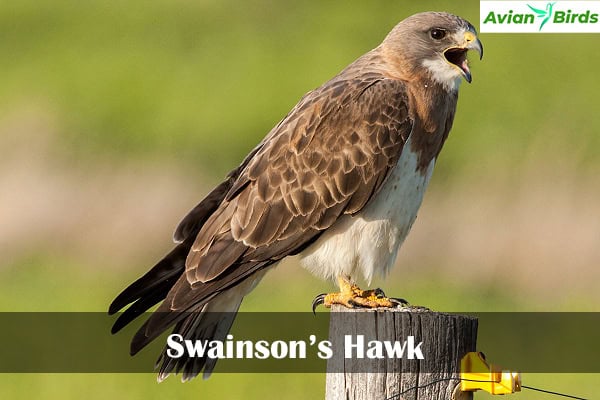
Call and Identification
The Swainson’s Hawk makes a high-pitched, whistling “kree-ee-eer” call. This sound helps birders easily spot them as they fly over Iowa’s varied landscapes. They also have broad, rounded wings and dark brown tops with pale bottoms.
In the fall, Swainson’s Hawks gather in large groups, sometimes hundreds, heading to South America for the winter. Seeing these hawks together is a reminder of Iowa’s rich bird life. It also highlights the need to protect their natural habitats.
Check Our Previous Articles:
10. Ferruginous Hawk
The Ferruginous Hawk is the last hawk species found in Iowa. It stands out with its rusty-red color and large size. This makes it a favorite among birdwatchers in the state.

There have been many sightings of the Ferruginous Hawk in Iowa over the years. In 1986, it was seen at Rathbun Reservoir. Another sighting was in 1934 at Long Pond in Guthrie County. The Iowa Records Committee looked into sightings from 1977 to 1999.
These hawks like to perch on power poles and high towers. They also soar and hunt in Iowa’s varied landscapes. Birdwatchers have seen them in different actions, like sitting, flying, and landing.
Many birders are interested in the Ferruginous Hawk. They share photos and videos of its activities. Some even talk about its interactions with other hawks, like the Red-tailed Hawk.
The Ferruginous Hawk is the last hawk we’ll talk about. It’s a great end to our look at Iowa’s hawk species. Its unique look and rare sightings make it a top birdwatching find.
Final Thoughts
In the end, Hawks In Iowa is home to many hawk species, each with its special traits and ways of life. From the tiny Sharp-shinned Hawk to the big Red-tailed Hawk, these birds are key to Iowa’s ecosystem.
Learning about Iowa’s hawks helps bird lovers and nature fans understand their importance. Seeing the quick hunting of the Cooper’s Hawk or the big wings of the Red-tailed Hawk is amazing. Iowa’s hawks are truly inspiring.
We must keep protecting the places where these birds live. This way, future generations can also see the hawks flying in Iowa’s skies. Together, we can keep Iowa’s nature and its hawks safe for a long time.




